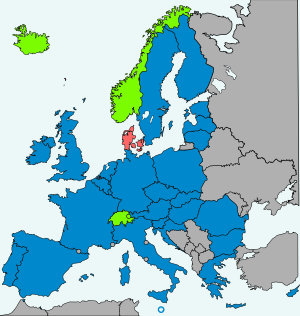Dublin Regulation

The Dublin regulation is used to decide which European Member State is responsible for examining an asylum application. It was previously known as the Dublin III procedure.
In general the principle is that your asylum application will be processed by the first country that they can prove you entered.
If you have given fingerprints in another member state they are stored in the EURODAC computer system. If you subsequently apply in Ireland your fingerprints will be taken and compared with those in the EURODAC system.
If a match is found you will be removed to this country and your asylum application will happen there. You have no choice about this. Some member states use force to get fingerprints. Other sources of evidence can also be used to prove you came though another member state (for example if you tell them).
Any details you give in interviews about your journey will decide if Dublin III will be used. If you flew directly into Ireland or can prove you came overland without stopping and were unaware you were crossing other member states (for example inside a closed truck), you should not be transferred.
You may be interviewed in person in order to find out which member state is responsible for processing your asylum application. If the Department of Justice decides that your asylum application should be processed in another member state, it requests a transfer. If the second state agrees to take you, you will be informed by letter and the transfer will take place.
Dublin III transfers between Ireland and the UK happen on a regular basis, transfers to other member states are much rarer.
Example: If you apply for asylum in Ireland but say during your interview that you spent three weeks in Spain; you may be transferred to Spain under Dublin III and have to ask for asylum there.
If you tell the authorities that you wish to join your husband, wife or child (children under 18 years can also join siblings), who is an asylum seeker or a refugee in another member state, you may be transferred under Dublin III. This clause is applied very inconsistently between different states.
When the transfer notice has become final, the member states agree on the conditions of the transfer. The entire Dublin III procedure cannot last longer than 11 months. (except when a person flees or if the person is imprisoned). If you have lived for at least 5 months in a member state, this country is responsible for your application.

Dublin III member states are:
Austria, Belgium, Bulgaria, Croatia, Cyprus, Czech Republic, Denmark, Estonia, Finland, France, Germany, Greece, Hungary, Ireland, Italy, Latvia, Lithuania, Luxembourg, Malta, Netherlands, Poland, Portugal, Romania, Slovakia, Slovenia, Spain, Sweden, United Kingdom, plus Norway, Iceland, Switzerland and Liechtenstein.
Can I challenge a DUBLIN convention ruling?
Challenging Dublin III cases is very hard, but there are some legal processes against deporting to some other EU countries. If you have been fingerprinted before coming to Ireland, it is very important to ask for advice before you claim asylum.
You might be able to challenge a ruling if:
- The transfer would involve a ECHR Article 3 breach and would lead to inhuman and degrading treatment (this is currently the case for Greece and there are ongoing challenges for other countries in EU).
- If you have family in Ireland
- If Ireland wants to send you to an EU country that is likely to return you to a country that Ireland does not deport people to
- If you have been a victim of torture or you have a serious medical condition, you should not be detained. These are not reasons against a Dublin removal but can give you more time to get advice.
